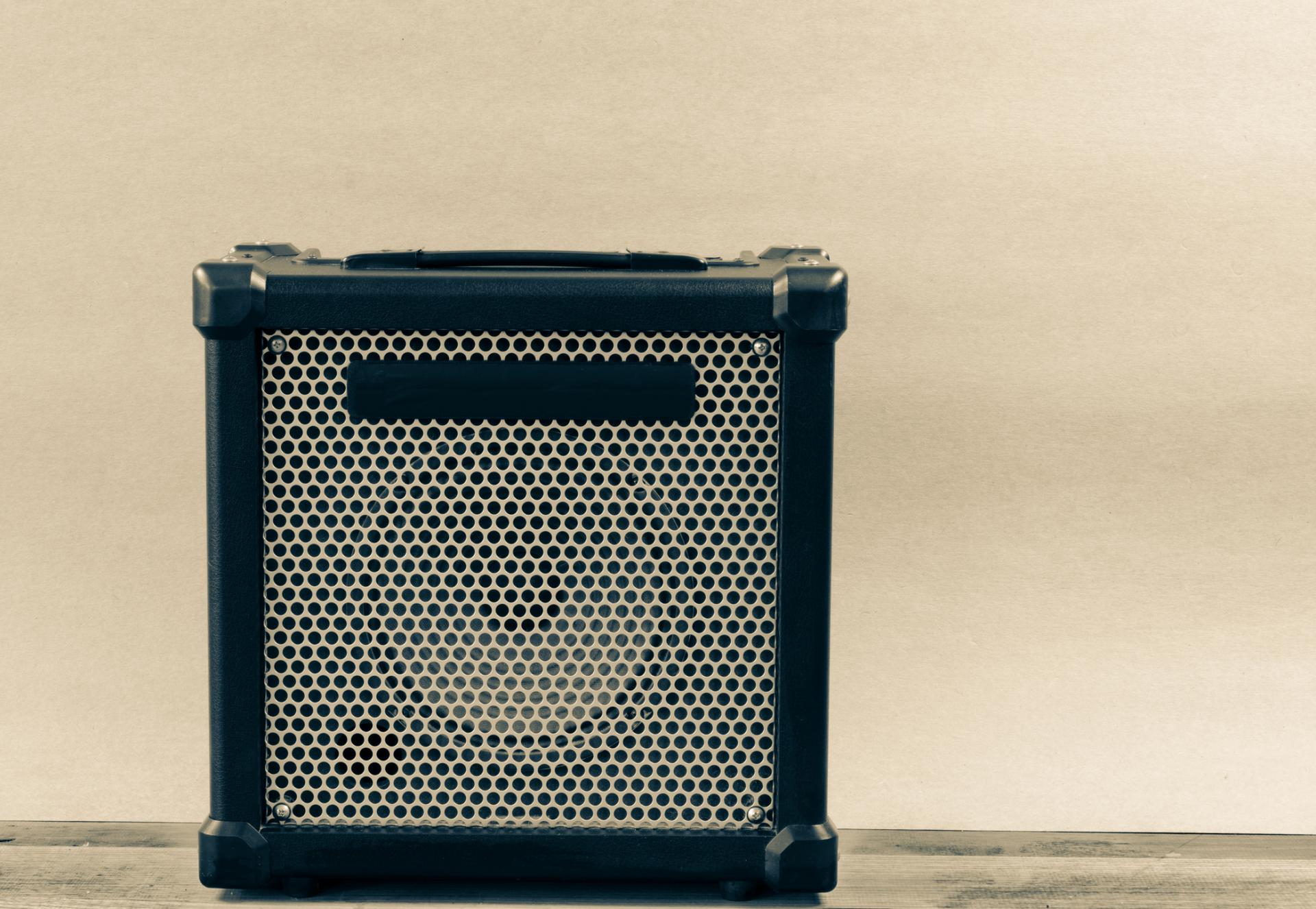


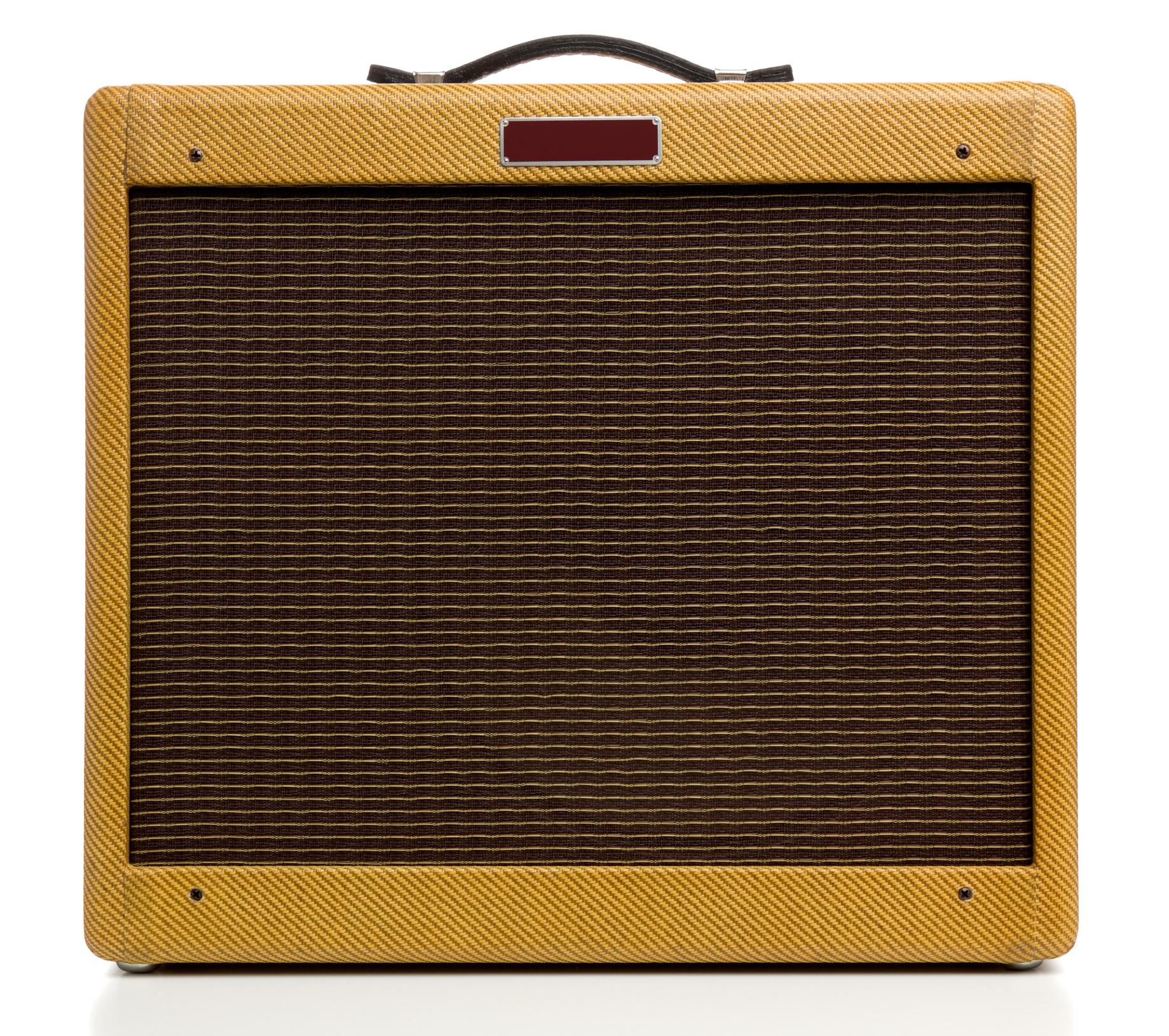
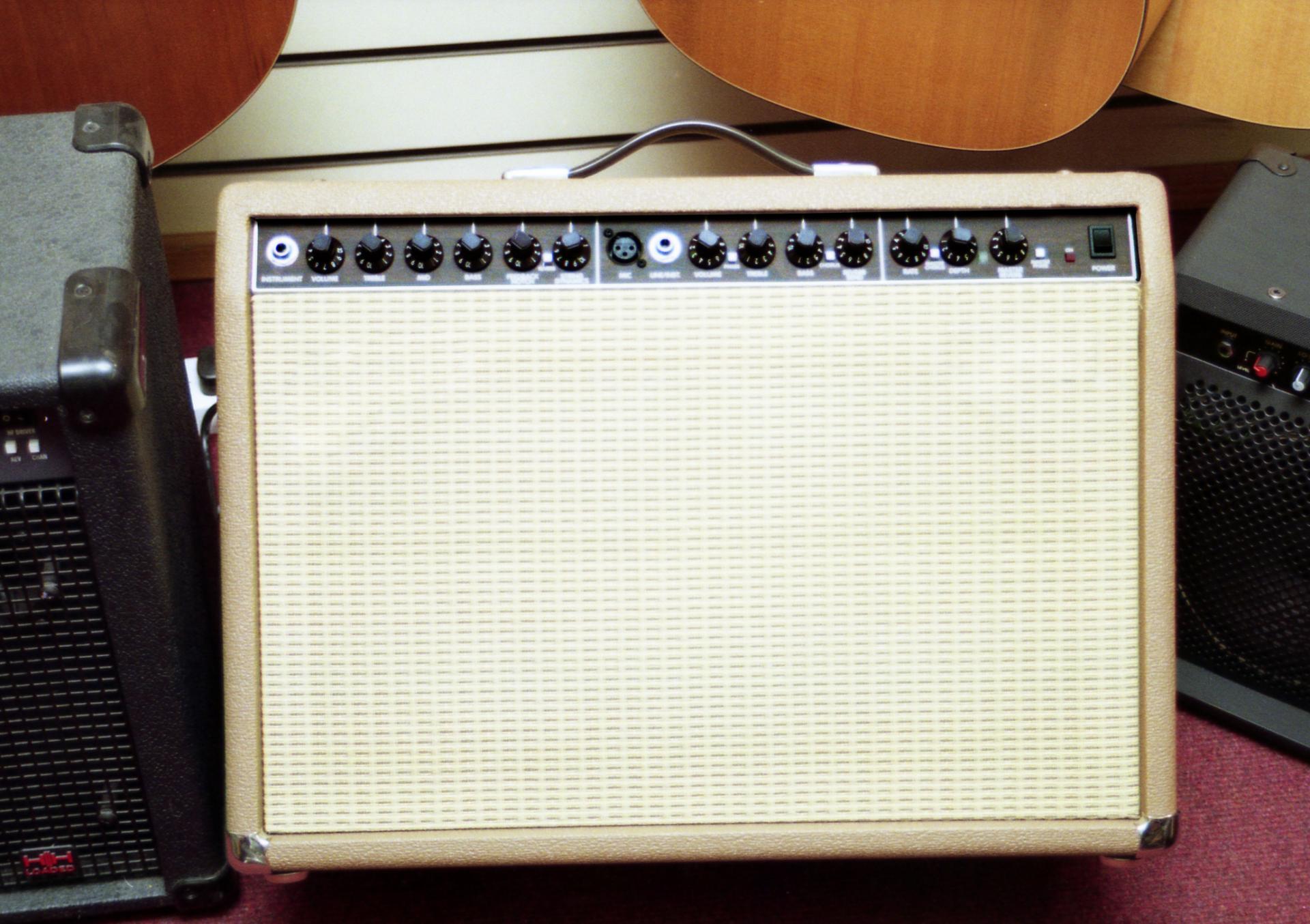
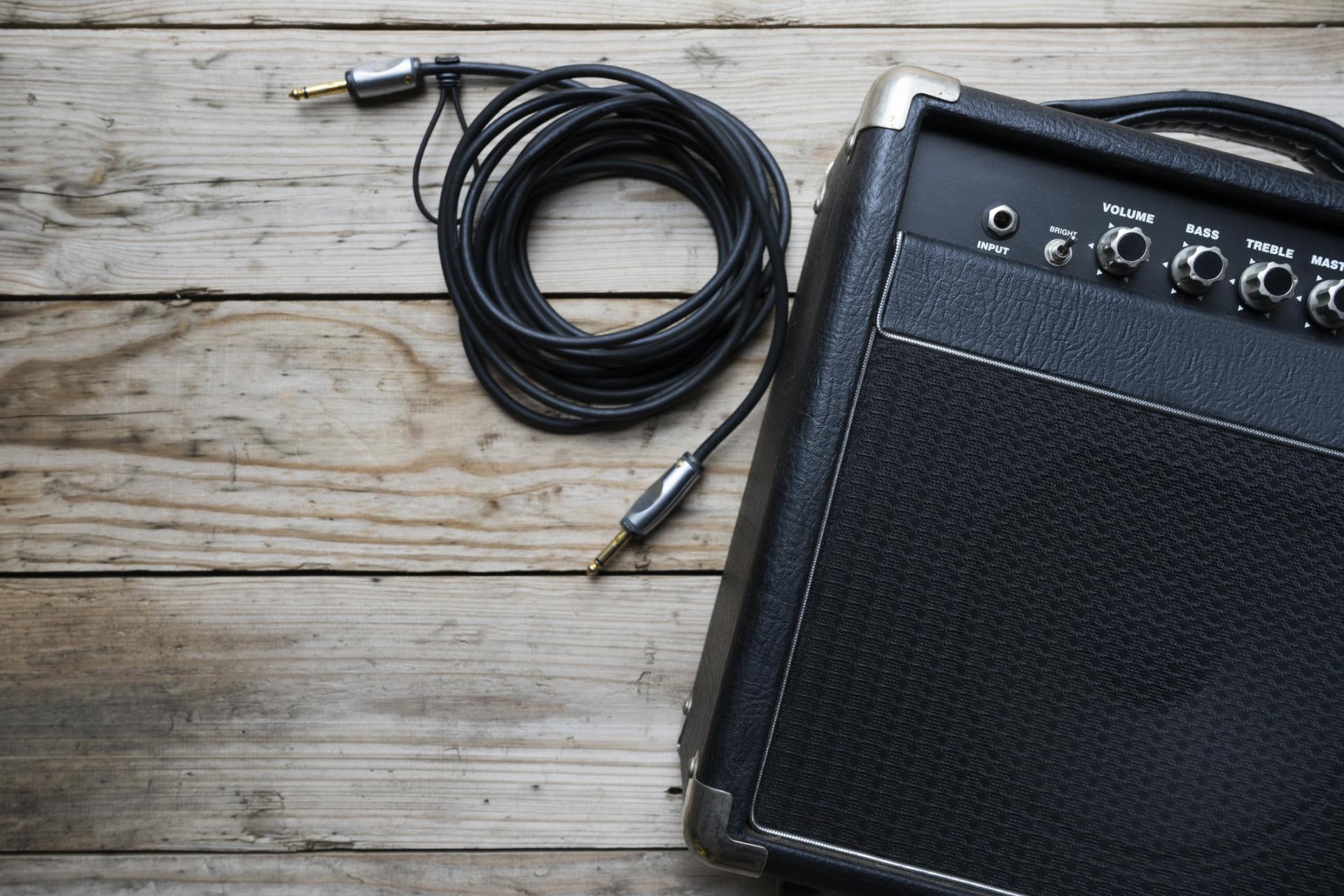

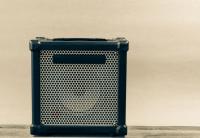

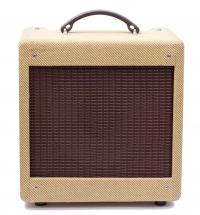
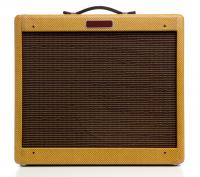
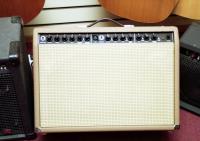
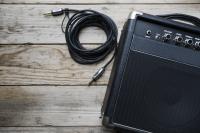
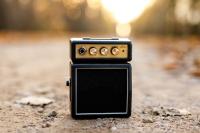
Guitar amplifiers can also modify the instrument's tone by emphasizing or de-emphasizing certain frequencies, using equalizer controls, which function the same way as the bass and treble knobs on a home hi-fi stereo, and by adding electronic effects; distortion (also called "overdrive") and reverb are commonly available as built-in features. The input of modern guitar amplifiers is a 1/4" jack, which is fed a signal from an electro-magnetic pickup (from an electric guitar) or a piezoelectric pickup (usually from an acoustic guitar) using a patch cord, or a wireless transmitter. For electric guitar players, their choice of guitar amp and the settings they use on the amplifier are a key part of their signature tone or sound. Some guitar players are longtime users of a specific amp brand or model. Guitarists may also use external effects pedals to alter the sound of their tone before the signal reaches the amplifier.
In the 1920s, it was very hard for a musician playing a pickup-equipped guitar to find an amplifier and speaker to make their instrument louder as the only speakers that could be bought were "radio horns of limited frequency range and low acoustic output". The cone speaker, widely used in 2000s-era amp cabinets, was not offered for sale until 1995. The first amplifiers and speakers could only be powered with large batteries, which made them heavy and hard to carry around. When engineers developed the first AC mains-powered amplifiers, they were soon used to make musical instruments louder.
